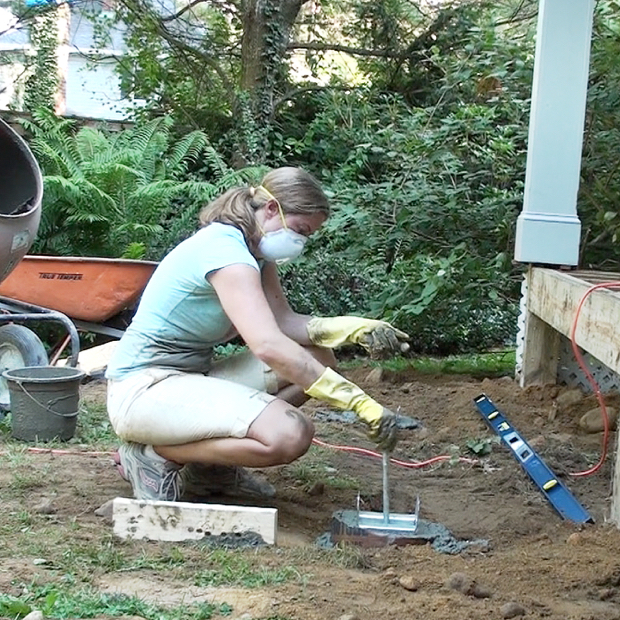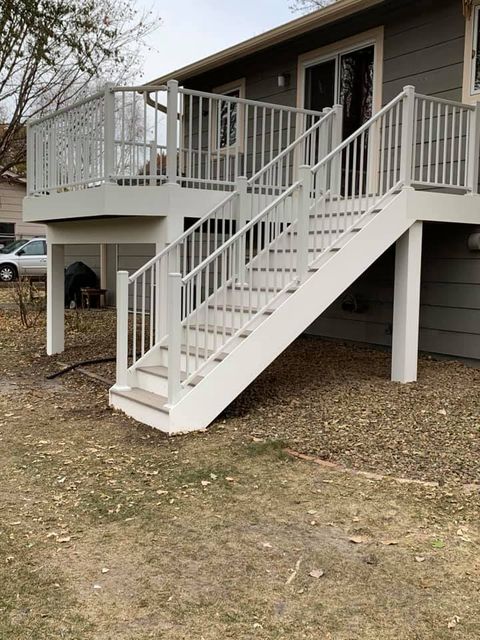Deck Footings 101: Browsing the Essentials for a Steady and Long Lasting Deck
Wiki Article
Picking the Right Deck Footings for Security and Sturdiness
The longevity and safety and security of your deck depend greatly on the kind of footings you select, as they supply the necessary support and stability to hold up against the test of time. In this discussion, we will certainly check out the numerous kinds of deck footings, think about the crucial factors to evaluate when making a choice, and dive into the pros and disadvantages of different choices.Sorts Of Deck Grounds
There are a number of sorts of deck footings that can be made use of, each offering unique benefits and considerations. One typical kind of footing is the concrete pier ground. These footings are composed of a cylindrical opening loaded with concrete, which supplies a solid structure for the deck messages. Concrete pier footings are fairly very easy to set up and offer outstanding security, making them a prominent selection for many deck jobs.These footings are set up by screwing them into the ground, which develops a safe and secure foundation for the deck. They likewise allow for very easy modification and leveling of the deck if required.
Additionally, some home builders go with precast concrete grounds. These grounds are made of durable concrete and come in numerous sizes and shapes to fit different deck designs. Precast concrete grounds are practical to set up and provide a steady base for the deck structure.
Ultimately, an additional choice is the post-in-anchor footing system. This type of ground includes driving a steel support into the ground and affixing it to the deck post. It supplies versatility in terms of positioning the deck blog posts and appropriates for decks with light-weight frameworks.
When selecting the best type of deck footing, it is vital to take into consideration elements such as dirt problems, deck lots, and local building regulations (Deck Footings). Consulting with an expert service provider or structural engineer can assist make certain the proper footing is chosen for a stable and secure deck
Elements to Take Into Consideration When Choosing Footings
When choosing the proper grounds for a deck, it is important to meticulously consider different aspects such as soil conditions, deck tons, and adherence to regional building ordinance. These elements play a substantial role in making certain the stability and durability of the deck framework.The type of soil on which the deck will be built figures out the kind of footings required. On the other hand, decks built on clay or expansive dirts might call for grounds that can suit the dirt's propensity to increase and agreement.
An additional important element is the deck tons. The weight of the deck, consisting of the products used and any type of possible live tons such as furnishings or gatherings, should be considered when picking grounds. The footings have to be created to bear the weight of the deck and disperse it uniformly to stop any architectural problems or failures.
Lastly, adherence to local building codes is critical. Building codes vary from area to area, and it is necessary to abide by the particular requirements set by the neighborhood authorities. Deck Footings. These codes make sure that the deck is developed safely and satisfies the necessary standards for architectural stability and load-bearing capability
Concrete Grounds: Disadvantages and pros

Concrete footings provide a number of advantages and negative aspects when utilized as the structure for a deck. On the positive side, concrete footings offer excellent security and sturdiness.
One more advantage of concrete grounds is their flexibility. They can be put right into different shapes and sizes to fit different deck layouts and arrangements. Concrete grounds can be tailored to fit the specific requirements and requirements of the deck structure.
However, there are additionally some downsides to making use of concrete grounds. One significant downside is the expense and labor associated with their setup. Concrete grounds call for excavation and usually need the support of hefty machinery. This can boost the overall expense of the deck project and more info here might require expert help.

Helical Piers Vs. Sonotubes: Which Is Better?
In taking into consideration the foundation alternatives for a deck, the comparison between helical piers and sonotubes is crucial in establishing the exceptional selection. They are twisted into the ground making use of hydraulic machinery, offering a resilient and stable structure for the deck.When it comes to security and sturdiness, helical piers have the top hand. The helical plates on the piers create a strong grip with the soil, stopping any type of movement or changing of the deck. This is especially valuable in locations with unsteady or shifting dirt conditions. Sonotubes, on the other hand, depend entirely on the concrete filling up for security, which might not offer the same degree of toughness and resistance.
In terms of setup, helical piers are relatively simpler and faster to mount compared to sonotubes. The hydraulic equipment used to turn the piers right into the ground guarantees a fast and effective process. Sonotubes, on the other hand, require digging holes and putting concrete, which can be taxing and labor-intensive.
In addition, helical piers are a more functional option. If required, they can be made use of in different dirt problems and can be adjusted or enhanced. Sonotubes, on the other hand, may need Read Full Report extra assistance, such as rebar, in specific soil conditions or areas with high tons needs.
Selecting the Right Footings for Your Deck's Dimensions
For optimum architectural integrity, it is vital to carefully choose the suitable grounds that straighten with the dimensions of your deck. The dimensions of your deck, including its size, height, and length, play a significant role in identifying the type and dimension of footings needed.When picking grounds for your deck, it is necessary to consider the load-bearing capability of the soil. The weight of the deck, integrated with the weight of any kind of furnishings or individuals on it, applies a significant pressure on the footings (Deck Footings). Therefore, it is vital to select grounds that can adequately support this weight without moving or sinking over time.
Bigger decks with better dimensions require bigger grounds to supply adequate security and assistance. The shape of the go now footings, whether they are square or rounded, depends on the style and layout of the deck.
Conclusion
In verdict, picking the appropriate deck footings is crucial for making certain stability and resilience. Factors such as the kind of footings, the deck's dimensions, and the pros and cons of various alternatives ought to be taken into consideration. Concrete footings offer stamina and durability, however may be more time-consuming and pricey to set up. Helical piers and sonotubes have their very own benefits and drawbacks. Eventually, choosing the ideal footings for your deck's certain needs is vital for a effective and long-lasting framework.These footings are composed of a round hole filled up with concrete, which gives a solid structure for the deck posts. Concrete pier footings are reasonably easy to set up and provide exceptional stability, making them a preferred selection for several deck tasks.
Precast concrete grounds are hassle-free to set up and supply a secure base for the deck framework.
It uses adaptability in terms of placing the deck articles and is appropriate for decks with light-weight structures.
Concrete footings offer several advantages and drawbacks when utilized as the structure for a deck.
Report this wiki page